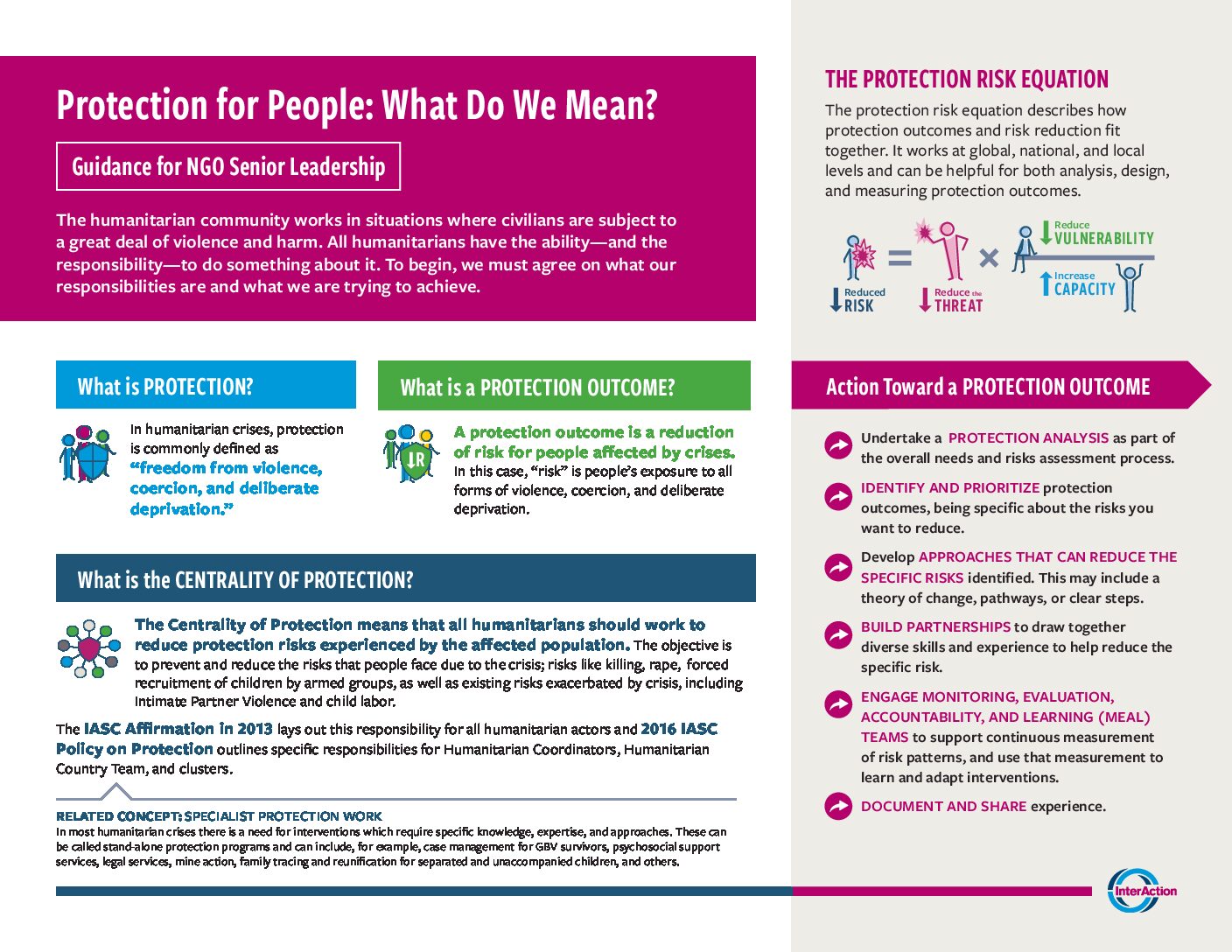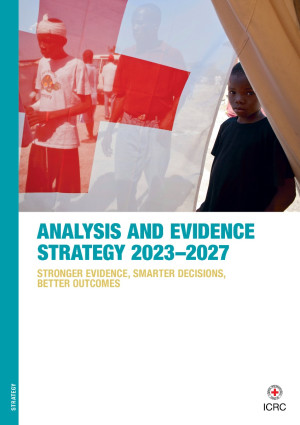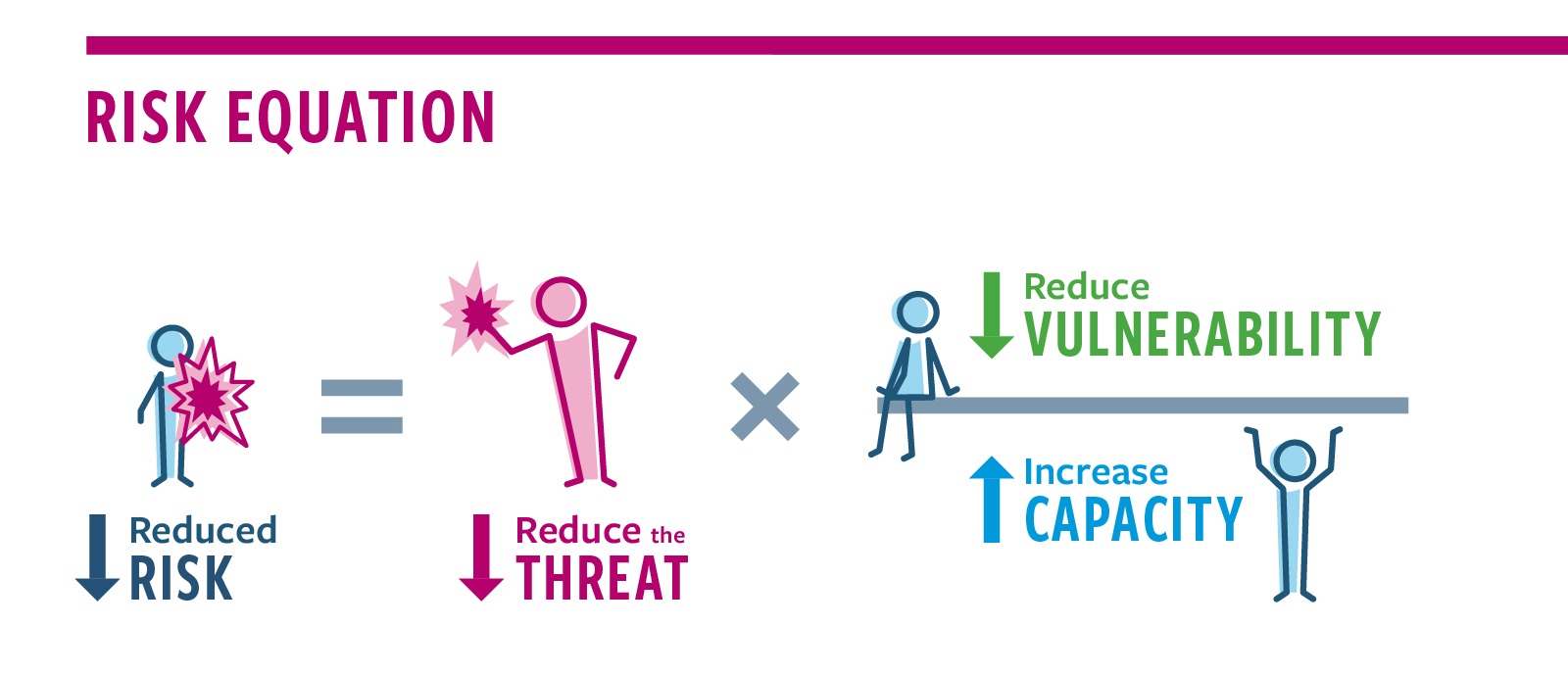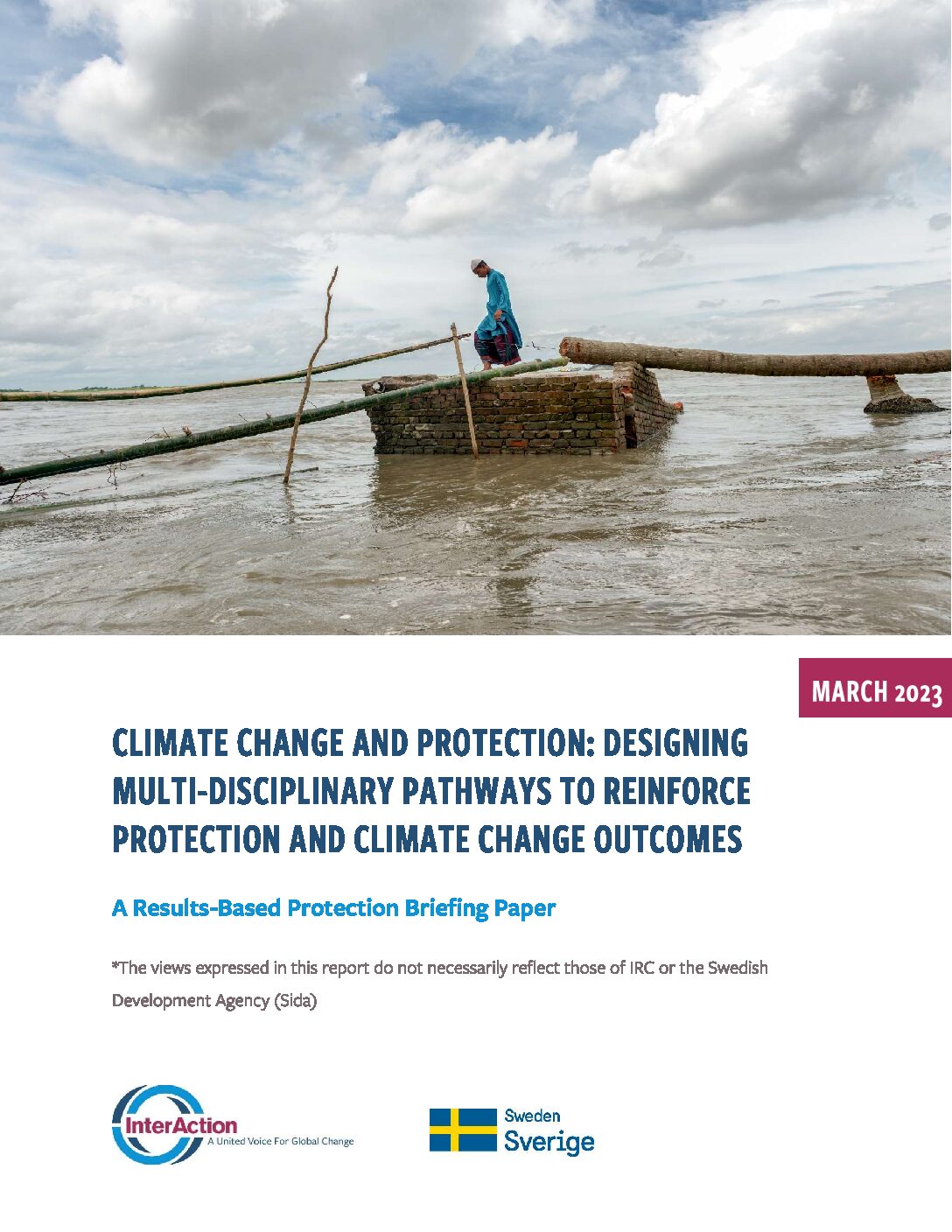Featured Resource
 Protection for People: What Do We Mean? Guidance for Senior Leadership
Protection for People: What Do We Mean? Guidance for Senior Leadership

InterAction has published and collected resources including tools, reports, project evaluations, blogposts, and others from Members and partners that promote results-based approaches to protection since 2012; all of which can be found in this resource library. To explore practical case examples of RBP in practice, visit the case example page. Background photo By: Simon Moricz Sabjan is licensed under the CC BY-NC 4.0 license.


Earlier this year, InterAction’s Protection team began a process of redesigning its reference handouts and how it presents material to the public. In collaboration with a design team, they were able to produce an updated visual representation of the Framework for Protection Risk Analysis. The handout provides all the necessary information, and its enhanced design and explicative graphics make it easy to follow.

The 2022 Annual RBP Briefing Paper, using a results-based approach to protection, aims to begin to identify ways that humanitarians must work to understand the links between protection risks and the impacts of climate change in settings of armed conflict. Beginning with the perspective that reducing protection risk is a priority for the humanitarian community, we ask the questions: how does climate change impact that objective? What further considerations should we make in our protection analysis and strategies that incorporate context-specific and global climate change manifestations? What kind of collaboration do we need to address these issues effectively? And in the specific context of armed conflict, how must the behavior of armed actors be addressed?

"*" indicates required fields